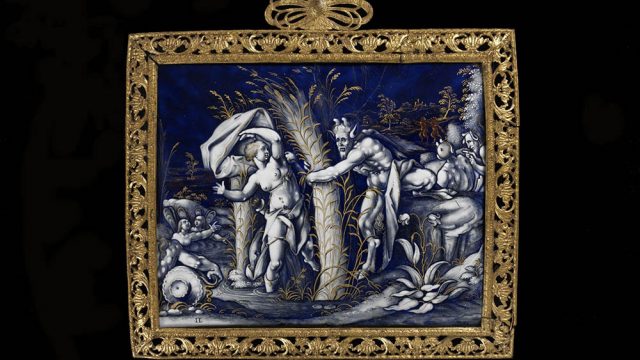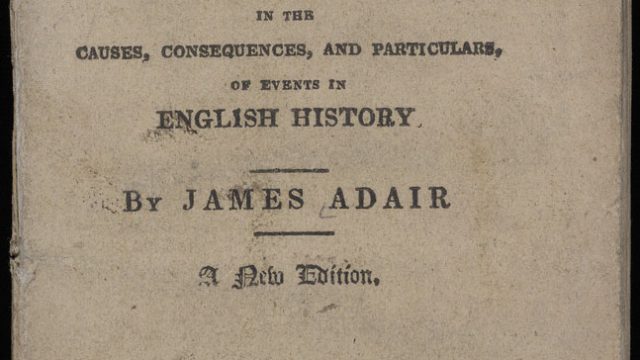This post was written by Joanna Weddell, AHRC CDA Disseminating Design, Centre for Research and Development, University of Brighton and Research Department, the Victoria & Albert Museum.
This post is prompted by a curious caption and photograph in a press cuttings file on one of the major exhibitions of the V&A Circulation Department, English Chintz: English Printed Furnishing Fabrics from their Origins until the Present Day, from the V&A Archives at Blythe House. This survey exhibition, held at South Kensington in 1960, showed 500 examples of English chintz from around 1720 to contemporary designs; a travelling version of the show was toured by the Department both overseas and around the UK.
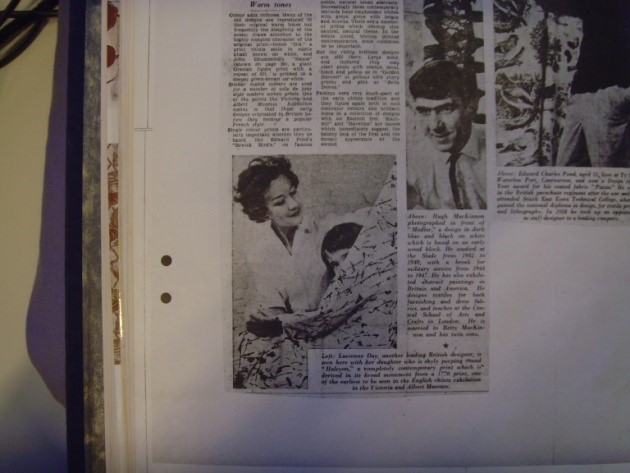
The curious photograph that caught my eye is of British designer, Lucienne Day (1917-2010), holding a roll of her strikingly modern fabric for Heal’s, Halcyon, 1960. The anonymous article – ‘Trends in taste’ – reviewed the travelling exhibition that visited Johannesburg in August 1960. The designer is shown with her daughter, Paula, ‘who is shyly peeping round “Halcyon,” a completely contemporary print which is derived in its broad movement from a 1770 print’. Day’s use of the V&A collection as inspiration is well established and dated from her student days at the Royal College of Art, so could the source for this ‘completely contemporary’ pattern really be a late 18th century textile?
Another press cutting, this time from the export magazine, The Ambassador, provides further details as it pairs illustrations of the specially commissioned contemporary fabrics in English Chintz with their historic inspirations, shown in sepia. Lucienne Day’s fabric is the closing image of the article to demonstrate that ‘the wealth of our design tradition becomes an inexhaustible point of departure for every kind of design from the most literal to the most abstract interpretation’. Halcyon is shown with a page from the Bromley Hall Pattern Book (1770-79) that was itself based on William Curtis’s Flora Londiniensis (1777) and the caption confidently comments that Day’s design is ‘A free abstraction which clearly stems from the same source as its 18th century counterpart’. Nevertheless, Halcyon’s scratched and spidery lines and loosely botanical source seem to follow the independent trajectory of Day’s design aesthetic seen in earlier patterns such as Calyx, 1951 and Dandelion Clocks, 1953.
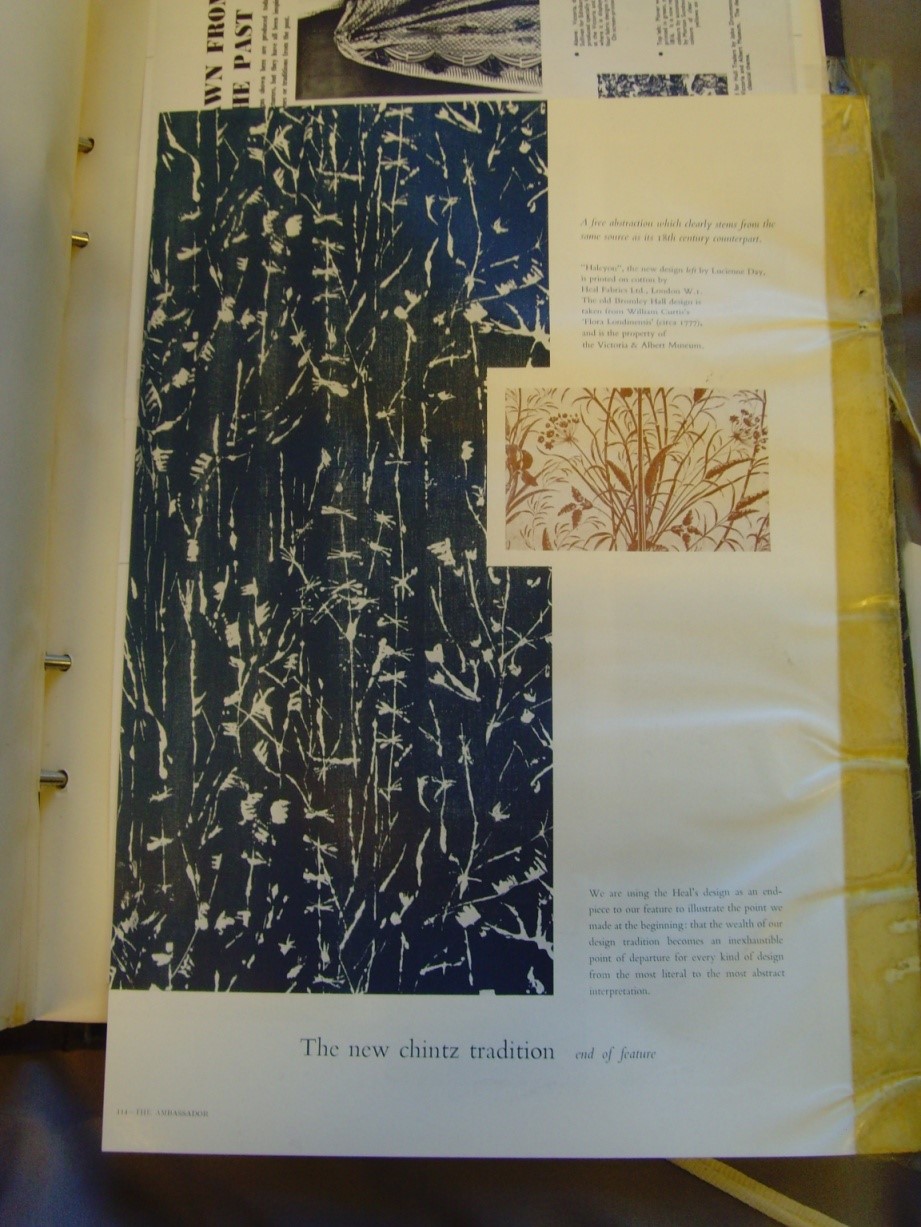
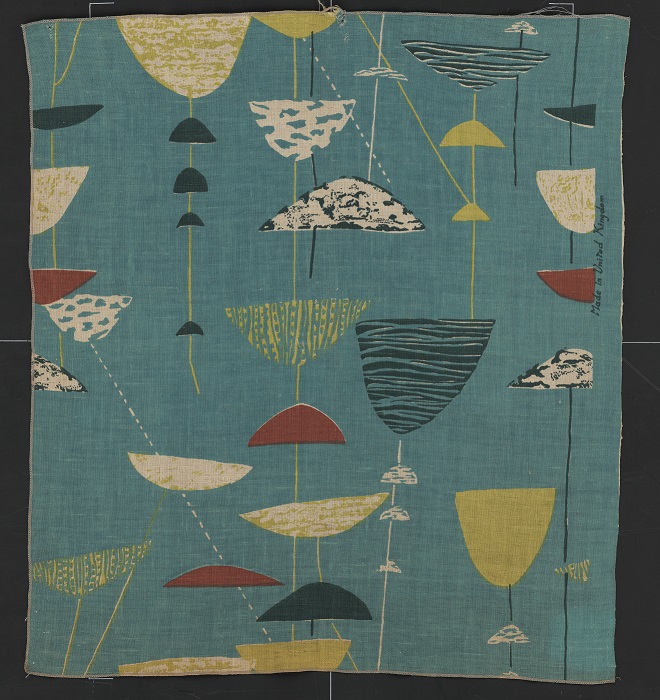
The Bromley Hall Pattern Book had been donated to the Museum by the Calico Printers’ Association after its discovery in their Manchester archive by the Keeper of Circulation, Peter Floud in 1955. The V&A English Chintz catalogue explains that modern fabrics were produced especially for the show ‘on the basis of some of the historic material assembled for it’ and expresses the hope that ‘the exhibition will provide further inspiration to textile designers’. Here, rather than providing specific source material for Halcyon, we see the V&A acting as a ‘point of departure’ to improve the design and manufacture of British goods – pursuing Henry Cole’s original aims as it does today.
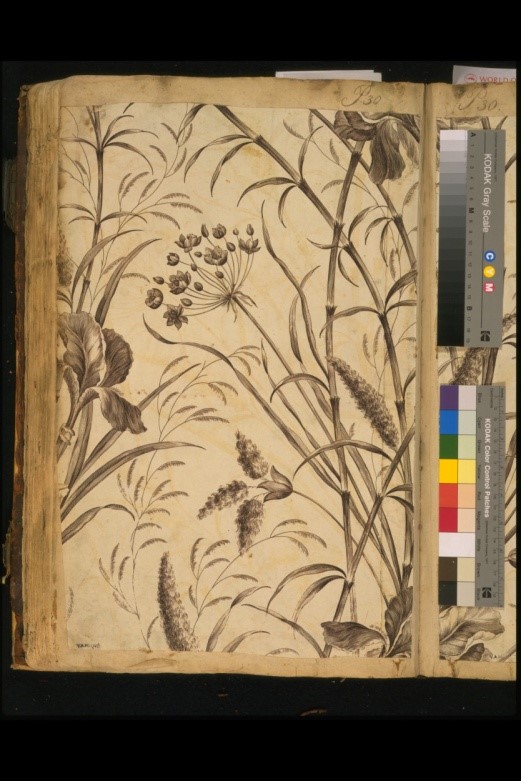
Photograph of Lucienne Day by John Gay at the National Portrait Gallery
